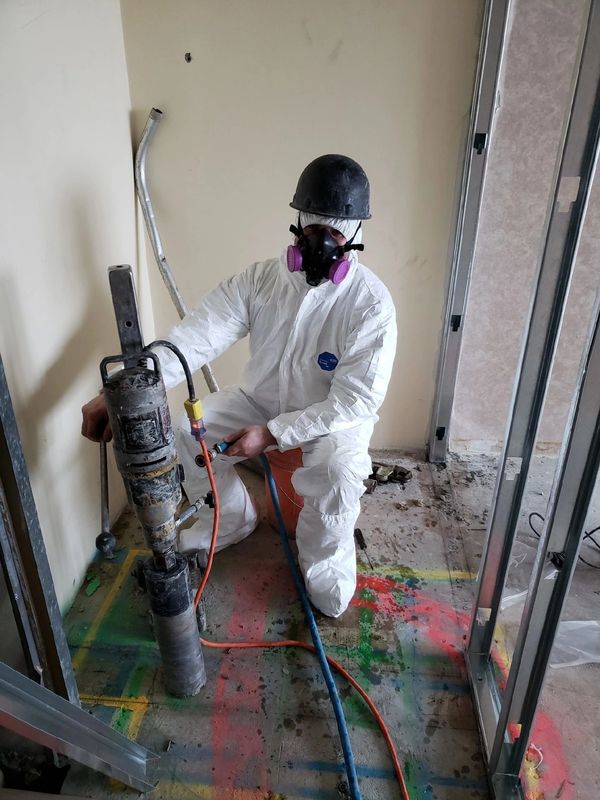Beyond the Surface Area: Leveraging Advanced Concrete Scanning Techniques for Unmatched Precision and Insight
In the world of construction and facilities upkeep, the mission for precision and thoroughness is endless. Advanced concrete scanning strategies have become important tools in this search, providing a look underneath the surface area to reveal a world of essential understandings. By utilizing cutting-edge modern technologies, experts can uncover abnormalities, evaluate the condition of concrete frameworks, and make informed decisions that form the program of jobs. The implications of these methods extend much beyond plain surface-level evaluations, assuring a depth of precision and understanding that is unrivaled.
Relevance of Advanced Concrete Scanning
The relevance of making use of sophisticated concrete scanning strategies lies in the unparalleled precision they use for spotting sub-surface anomalies and guaranteeing structural integrity. By employing sophisticated innovations such as ground-penetrating radar (GPR), electromagnetic induction, and progressed finder imaging, building professionals can delve under the surface area of concrete frameworks with a level of precision that much surpasses traditional assessment methods. Concrete Scanning. These strategies enable the identification of surprise hazards like rebar corrosion, voids, conduits, or post-tension cable televisions that might jeopardize the security and safety of a structure over time
In addition, advanced concrete scanning offers indispensable insights right into the overall condition of a concrete aspect without the demand for intrusive steps, decreasing the danger of causing damage throughout the evaluation process. The capability to identify the precise place and deepness of prospective issues enables targeted fixings and maintenance, ultimately lengthening the life-span of the framework and enhancing its performance. In essence, the significance of innovative concrete scanning can not be overstated in the world of building and construction and framework maintenance, where accuracy and reliability are extremely important.
Kinds Of Cutting-Edge Technologies

Anomalies and Defect Detection

In addition to GPR, concrete scanning methods like thermography and impact-echo testing are additionally reliable in detecting flaws and abnormalities. Thermography utilizes infrared modern technology to determine variants in surface area temperature, showing prospective areas of problem such as delamination or moisture ingress. On the various other hand, impact-echo testing includes assessing acoustic reactions to discover voids, fractures, and various other defects within the concrete. By leveraging these advanced methods, professionals can proactively resolve architectural issues, making sure the long life and security of concrete structures.
Assessing Concrete Condition
Exactly how can designers accurately evaluate the condition of concrete structures to ensure their long life and security? Analyzing the concrete condition is a crucial element of keeping framework honesty. Different sophisticated concrete scanning methods are employed for this function. Ground-penetrating radar (GPR) is commonly utilized to evaluate the interior structure of concrete, spotting spaces, cracks, and other abnormalities that might compromise its toughness. Furthermore, impact-echo testing can give insights right into the density and honesty of concrete components. Ultrasonic pulse velocity screening is another important approach for evaluating concrete top quality by determining the rate of acoustic waves via the material.
Combining non-destructive testing techniques with visual examinations permits for a thorough evaluation of concrete condition, allowing designers to determine potential problems early on and carry out timely maintenance or fixings. By leveraging these innovative methods, engineers can make certain the long-lasting durability and security of concrete frameworks.
Enhancing Decision-Making Procedures
In the world of framework management, optimizing decision-making procedures is imperative for making certain the effective maintenance and long life of concrete structures. Enhanced decision-making procedures in concrete management include using innovative scanning methods to gather detailed information on the condition of structures. By leveraging technologies such as ground-penetrating radar and 3D imaging, stakeholders can make enlightened choices pertaining to substitute, reinforcement, or repair service visit this site approaches.
These progressed scanning methods provide very useful understandings into the inner make-up of concrete, determining prospective problems such as gaps, splits, or deterioration that may not show up on the surface area. This level of detailed details discover here permits proactive upkeep planning, lessening the risk of structural failures and raising the total life expectancy of concrete structures.
Furthermore, by including digital documentation and evaluation tools into the decision-making procedure, stakeholders can track the advancement of concrete conditions over time, allowing anticipating upkeep techniques and enhancing source allocation. Ultimately, the assimilation of innovative concrete scanning methods improves decision-making processes by supplying unrivaled precision, understanding, and performance in infrastructure monitoring.
Conclusion
Finally, progressed concrete scanning methods provide unparalleled accuracy and understanding in detecting anomalies, issues, and examining the problem of concrete frameworks. By leveraging sophisticated innovations, decision-making processes can be enhanced, causing even more reliable and educated options for maintaining and fixing concrete framework. These techniques play an important role in making certain the safety and long life of concrete structures, making them an important tool in the area of construction and design.
Additionally, progressed concrete scanning offers very useful insights right into the overall condition of a concrete component without the need for intrusive actions, decreasing the risk of triggering damages during the assessment procedure - Concrete Scanning. An additional ingenious modern technology is 3D X-ray scanning, which gives in-depth photos of the interior framework of concrete, using beneficial information without the requirement for harmful screening. In Addition, Concrete Cover Meters are made use of to gauge the density of concrete cover over reinforcement bars precisely. Improved decision-making procedures in concrete monitoring involve using advanced scanning techniques to gather detailed information on the problem of frameworks.In final thought, advanced concrete scanning strategies offer unrivaled precision and understanding in spotting check my source abnormalities, problems, and analyzing the condition of concrete frameworks